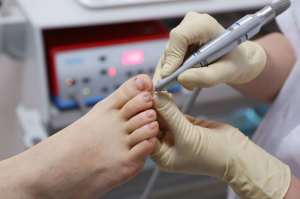The field of podiatry is the branch of medicine that focuses on the disorders of the feet and ankles. The job outlook of a podiatrist is good, and the income potential is high. If you are considering a career in podiatry, here are the qualifications you should have. Read on to learn more about this exciting field. Also, discover the training requirements and the career outlook. Become a Podiatric Surgeon: a career in podiatry is rewarding!
 Qualifications required to become a podiatrist
Qualifications required to become a podiatrist
Qualified individuals can practice as a podiatrist, a profession with many benefits. These professionals spend their first two years studying and learning from textbooks and their third and fourth years working in clinical rotations. Students learn how to conduct physical exams, administer diagnostic tests, and diagnose illnesses and disorders. They must also pass both written and oral exams. Once they graduate, they may practice under a podiatrist’s protected title. Learn more from The SA Podiatry Clinic Adelaide.
There are many requirements for becoming a podiatrist, including a Bachelor’s Degree in a relevant field. In addition, students must take biology, chemistry, anatomy, and physiology courses to qualify for the profession. There are also entrance requirements to medical school, including the MCAT. Therefore, podiatrist applicants should take the exam early to avoid having to retake the exam later.
There are several accredited colleges offering DPM degrees to pursue the field. In 2017, nine colleges offered this degree. Admission to these programs generally requires taking the Medical College Admission Test (MCAT). Once accepted into one of these programs, students must complete a residency that lasts at least three years. This program may be divided into subspecialties, such as pediatric podiatry or surgical procedures.
Career Outlook
The average lifespan for a podiatrist is nearly 50 years. This job has various responsibilities, from evaluating foot problems to managing acute and chronic diseases. As a result, careers in this field are generally low-stress, and the job requires little stress. Careers in podiatry also tend to have a high level of upward mobility, which means there are many opportunities for advancement. As with any profession, however, the career outlook is not without its challenges.
While the demand for podiatrists remains solid and many specialists cannot meet their patients’ growing demands. As a result, a shortage of podiatric physicians may limit the growth of this field. Moreover, the shortage is likely to persist even with the increased number of children participating in youth sports, which is both hyper-competitive and repetitive. Many adolescent athletes suffer from foot or ankle injuries as a result.
The income of a podiatrist can vary widely depending on their experience, location, and reputation. Some opt for academic research in a university or hospital. Others choose to pursue private practice. While setting up a private practice requires a significant investment in equipment, insurance, and rent, it can offer substantial financial rewards and flexibility in work. In addition to private practice, a podiatrist may work part-time in a hospital or clinic or work part-time. Learn more from The SA Podiatry Clinic Adelaide.
Training requirements
A Podiatrist is a medical professional who treats problems involving the feet, ankles, and related leg structures. Originally from North America, the term has become an accepted generic term for practitioners of podiatric medicine throughout the English-speaking world. So what is the training required for a Podiatrist? Find out more below! Despite the diverse scope of Podiatry, there are specific training requirements to become a Podiatrist.
The training requirements for Podiatric Medicine include a four-year doctoral degree and a comprehensive clinical and surgical residency. The American Association of Colleges of Podiatric Medicine is a national organization representing Podiatric Medicine colleges and providing resources for students and alums. It also highlights clerkship opportunities and links students to mentors. Besides, the American Board of Podiatric Medicine oversees the accreditation of colleges of Podiatric Medicine and accredited residency programs.